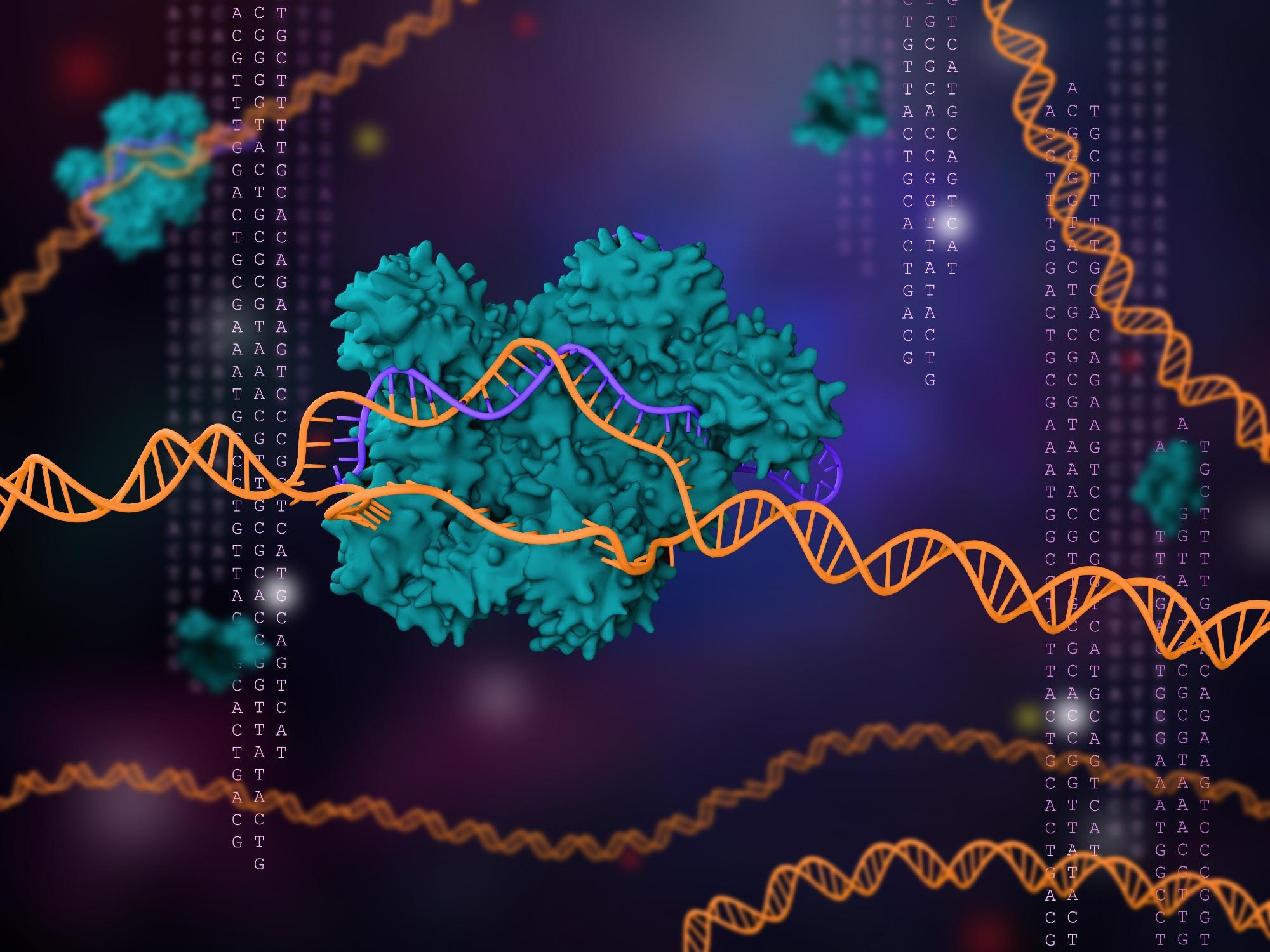In a recent study posted to the Journal of Biochemical and Molecular Toxicology, researchers reviewed clustered regularly interspaced short palindromic repeats (CRISPR)-based diagnostics for detecting severe acute respiratory syndrome coronavirus 2 (SARS-CoV-2).
 Study: CRISPR-based point-of-care diagnostics incorporating Cas9, Cas12, and Cas13 enzymes advanced for SARS-CoV-2 detection. Image Credit: Meletios Verras / Shutterstock
Study: CRISPR-based point-of-care diagnostics incorporating Cas9, Cas12, and Cas13 enzymes advanced for SARS-CoV-2 detection. Image Credit: Meletios Verras / Shutterstock
The coronavirus disease 2019 (COVID-19) pandemic caused by SARS-CoV-2 has adversely affected human lives, public health, and the economy. Diagnosis of SARS-CoV-2 infection is by detecting viral nucleic acids (ribonucleic acid [RNA]) or antigens. Although reverse transcription-polymerase chain reaction (RT-PCR) testing is widely used for SARS-CoV-2 detection, it is expensive, laborious, and requires skilled personnel. These limitations essentially mandate the need for rapid and accurate point-of-care (POC) tests.
In the current review, researchers discussed CRISPR-based technologies, emphasizing three CRISPR-associated (Cas) proteins, namely Cas9, Cas12, and Cas13, for COVID-19 diagnosis.
Diagnostic tests incorporating the CRISPR-Cas9 system
One of the largest Cas9 orthologs is from Francisella novicida (Fn), and the interactions of FnCas9 with deoxy RNA (DNA) primarily involve the 5’-NGG-3’ protospacer adjacent motif (PAM). DNA interrogation by CRSPR-FnCas9 and subsequent cleavage of the DNA duplex serves as an accurate and quick method for detecting single-nucleotide variants (SNVs), provided that DNA discrimination is constant throughout the genomic sequence.
This approach was termed FnCas9 editor-linked uniform detection assay (FELUDA), developed by the Institute of Genomics and Integrative Biology (IGIB) and the Tata group. FELUDA, a paper-based strip test for SARS-CoV-2 approved in India, requires the same sampling method as the quantitative PCR (qPCR), wherein naso- and oropharyngeal swabs and saliva samples are collected for RNA isolation.
The extracted RNA is subject to an optimized single-step RT-PCR on a standard PCR instrument rather than the high-priced qPCR, and the resultant amplicons are biotinylated. Next, the amplified nucleic acids are mixed and incubated with a FELUDA mix comprising guide RNA (gRNA) labeled with fluorescent amidite (FAM) and deactivated FnCas9 (dFnCas9).
The Cas9 ribonucleoprotein (RNP) complex binds to the 20-nucleotide target specifically if it harbors the signature sequence of SARS-CoV-2. Once the target sequence is located by the RNP complex, it moves along with the gold nanoparticles. The nanoparticles capture RNP complexes by adhering to FAM on the 3’ end of the gRNA. These nanoparticles are mixed with streptavidin. The nanoparticle-bound FELUDA complex is captured by the binding of streptavidin-biotin.
The test band (on the strip) would be colored when the target viral sequence is present, whereas unbound nanoparticles are captured on the control band. As such, positive samples result in two bands and negative samples in only one band. Evidence suggests that the assay is 97% sensitive and 100% specific with a detection limit of 10 viral RNA copies/μl. The FELUDA method requires minimal technical expertise without costly instruments but is limited by the requirement of a thermal cycler.
Using CRISPR-Cas12 system
Cas12 represents an alternative to Cas9 given its unique characteristics, like the absence of trans-activating CRISPR RNA (tracrRNA) and the ability to target motifs enriched with thymidine. CRISPR-based techniques for SARS-CoV-2 detection often use Cas12 to identify the viral sequences and rely on isothermal amplification methods like recombinase polymerase amplification (RPA) and loop-mediated isothermal amplification (LAMP). Further, these methods are ideally less expensive given the lack of a thermal cycler.
The CRISPR-based assay termed ‘DNA endonuclease-targeted CRISPR trans reporter (DETECTR)’ performs concurrent reverse transcription and LAMP (RT-LAMP) followed by detection of SARS-CoV-2 sequences in an accurate, fast and sensitive manner.
CRISPR-Cas13-based SARS-CoV-2 detection
Specific high-sensitivity enzymatic reporter unlocking (SHERLOCK) is a CRISPR-Cas13-based diagnostic test that features a detection mix consisting of Cas13a, custom crRNA, and a reporter RNA (RNA sensor) with a quencher and fluorophore. The sample containing the target RNA sequence will lead to cleavage of reporter RNA resulting in the release of fluorophore collaterally. Therefore, fluorescence is an indicator of a positive test result.
Moreover, single targets could be detected using commercial lateral flow devices/strips/assays. The detection method for these lateral flow assays uses an RNA sensor of a few nucleotides at the center and is labeled with biotin and FAM at the termini. Streptavidin binds to biotin, and an antibody labeled with FAM-specific gold nanoparticles attaches to the RNA sensor near the fluorophore resulting in a dark purple color at the test band. Two bands, control and test, indicate a positive test result, and a negative result is indicated by the presence of only the control band.
It has been reported that the SHERLOCK assay for SARS-CoV-2 detection is 96% specific and 100% effective in identifying the viral sequences. Further, a modified SHERLOCK assay that enables amplification without PCR is 100% sensitive and specific.
One study demonstrated a method bypassing the extraction of nucleic acids from samples. This has been reported as heating unextracted diagnostic samples to obliterate nucleases (HUDSON). Integrating HUDSON and SHERLOCK, researchers have designed a diagnostic tool termed streamlined highlighting of infections to navigate epidemics (SHINE). SHINE is advantageous over SHERLOCK; in that it is a single-step procedure, and fluorescence is detected by a smartphone, making it a scalable and high-throughput tool allowing automated data analysis.
Conclusions
While RT-PCR remains the gold standard for detecting SARS-CoV-2, it is necessary to develop diagnostic tests which are quick, reliable, accurate, and affordable. CRISPR-based diagnostics could potentially serve as viable alternatives to conventional PCR testing, and additionally, these tests could also be re-designed to detect other pathogens.